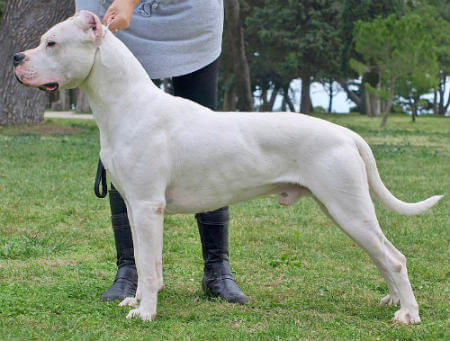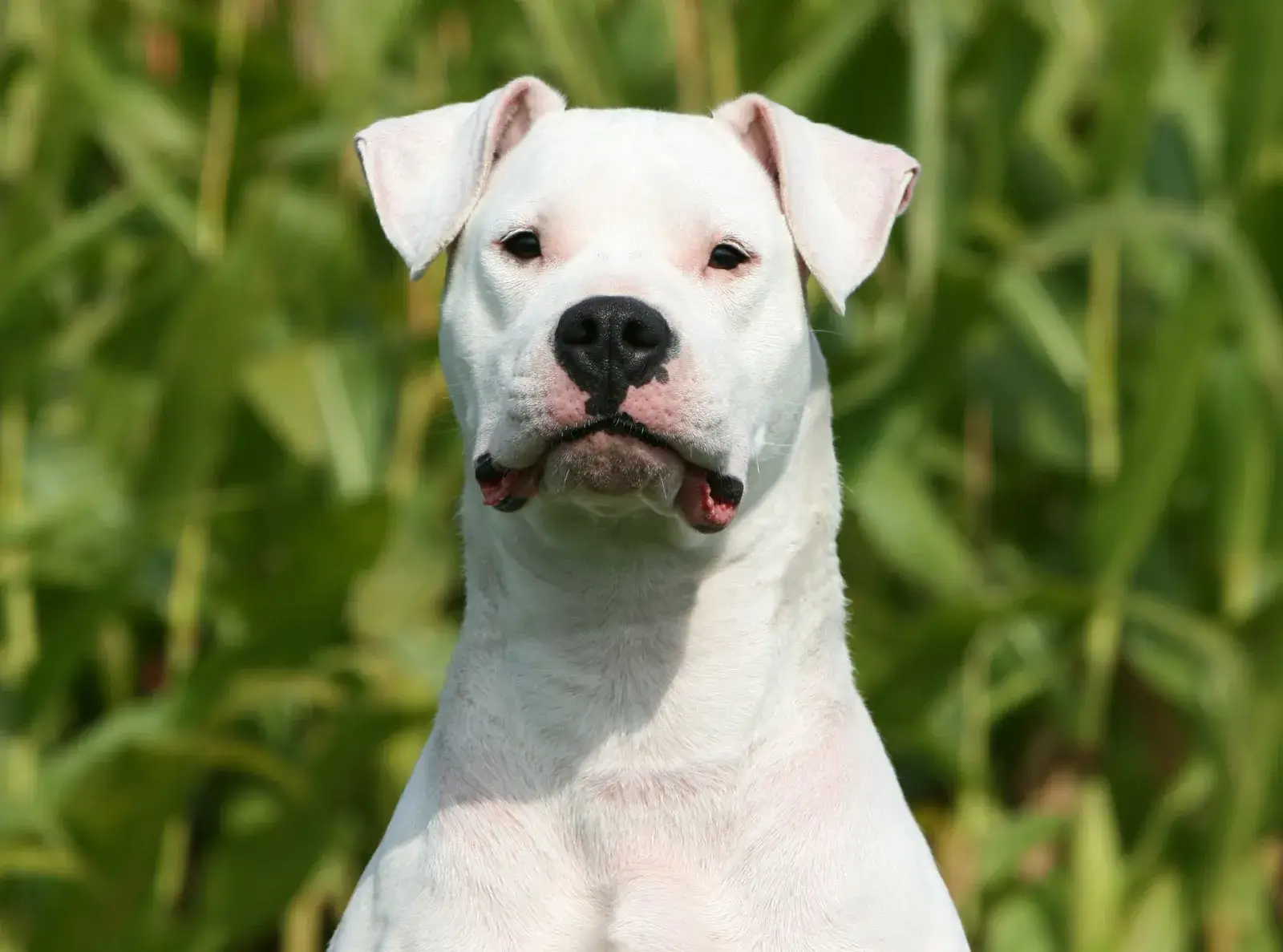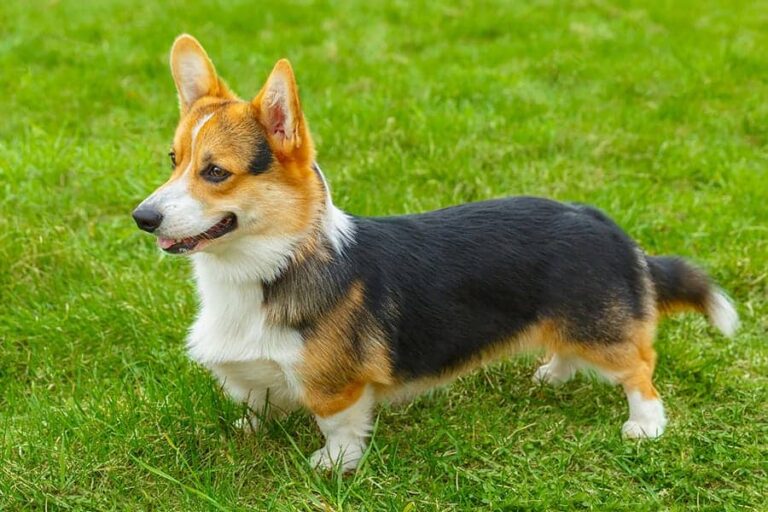Dogo Argentino Dog Breed Guide: Description, Temperament, Facts
The Dogo Argentino, also known as the Argentine Mastiff, is a powerful and athletic breed renowned for its hunting prowess and protective instincts. Originally bred in Argentina by Dr. Antonio Nores Martinez in the 1920s, the Dogo Argentino was designed to be a versatile hunting dog capable of tracking and bringing down big game such as wild boar and pumas. This breed is celebrated for its courage, strength, and loyalty, making it a formidable working dog and a loving family companion.
Contents
- 1 History and Origin
- 2 Physical Characteristics
- 3 Size and Weight
- 4 Coat and Color
- 5 Temperament and Personality
- 6 Training and Exercise Needs
- 7 Health and Lifespan
- 8 Diet and Nutrition
- 9 Grooming and Maintenance
- 10 Living Conditions
- 11 Dogo Argentino as a Working Dog
- 12 Interesting Facts about the Dogo Argentino
- 13 Adopting a Dogo Argentino
History and Origin
The breed’s creation was driven by Dr. Nores Martinez’s vision to develop a superior hunting dog that combined strength, tenacity, and a calm temperament. The Dogo Argentino’s lineage includes breeds such as the Cordoba Fighting Dog, Pointer, Great Dane, Boxer, and Spanish Mastiff. The resulting breed was recognized for its ability to hunt in packs and work tirelessly in harsh environments.
Physical Characteristics

The Dogo Argentino is a large, muscular dog with a distinct white coat. Males typically stand between 24-26.5 inches at the shoulder and weigh around 88-100 pounds, while females are slightly smaller, standing 24-25.5 inches tall and weighing 88-95 pounds. A broad head, powerful jaws, and a well-balanced body complement the breed’s strong, athletic build.
Size and Weight
- Males: 24-26.5 inches tall, 88-100 pounds
- Females: 24-25.5 inches tall, 88-95 pounds
Coat and Color
The Dogo Argentino’s short, smooth coat is always white, although some individuals may have a small black or dark patch near one eye, which is acceptable but not preferred according to the breed standard. This coat helps them withstand various weather conditions, and its white color aids in visibility during hunts.
Temperament and Personality
General Temperament
The Dogo Argentino is known for its courage, loyalty, and affectionate nature. Despite its formidable appearance, this breed forms strong bonds with its family and is often very gentle and loving towards children. They are naturally protective and will defend their home and loved ones with unwavering dedication.
Interaction with Families and Children
Dogos are excellent family pets for those who can provide firm and consistent leadership. They thrive in environments where they are included in family activities and given plenty of attention. Early socialization and training are crucial to ensure they are well-behaved around children and other pets.
Behavior with Other Pets
While the Dogo Argentino can coexist peacefully with other pets if raised with them, their strong prey drive and dominant nature may lead to issues with unfamiliar animals. Proper introductions and supervision are essential to maintain harmony in multi-pet households.
Training and Exercise Needs

Training Tips and Techniques
Training a Dogo Argentino requires a confident and experienced owner who can establish themselves as the pack leader. Positive reinforcement techniques, consistency, and early obedience training are key to managing this strong-willed breed. Enrolling in puppy classes and seeking professional guidance can be beneficial.
Exercise Requirements
Dogos are highly active dogs that need plenty of physical and mental stimulation. Daily exercise, including long walks, runs, and play sessions, is essential to keep them healthy and prevent boredom. Engaging in activities like agility, tracking, and obedience can also provide valuable outlets for their energy.
Mental Stimulation
Mental stimulation is equally important for the Dogo Argentino. Puzzle toys, training sessions, and interactive games can help keep their minds sharp and prevent destructive behaviors that may arise from boredom.
Health and Lifespan
Common Health Issues
The Dogo Argentino is generally a healthy breed but can be prone to certain health conditions. These include hip dysplasia, deafness (often seen in white-coated breeds), and skin allergies. Regular veterinary check-ups and preventive care are vital to maintaining their health.
Lifespan
The average lifespan of a Dogo Argentino is around 10-12 years, though with proper care and a healthy lifestyle, some may live longer.
Preventive Care and Regular Check-ups
Routine veterinary visits, vaccinations, dental care, and a balanced diet are essential components of a preventive health care regimen for the Dogo Argentino. Monitoring for signs of common health issues and addressing them promptly can contribute to a long and healthy life.
Diet and Nutrition
Recommended Diet
A high-quality, well-balanced diet is crucial for the Dogo Argentino. Protein-rich foods that support their muscle development and maintenance are particularly important. Consulting with a veterinarian to determine the best diet based on age, activity level, and health status is recommended.
Feeding Schedule
Adult dogs typically do well with two meals a day. Puppies may require more frequent feeding schedules to support their growth and development.
Foods to Avoid
Owners should avoid feeding their Dogo Argentino foods that are toxic to dogs, such as chocolate, grapes, onions, and certain artificial sweeteners. Table scraps and high-fat foods should also be limited to prevent obesity and digestive issues.
Grooming and Maintenance
Grooming Requirements
The Dogo Argentino’s short coat is relatively low-maintenance, requiring regular brushing to remove loose hair and keep its skin healthy. Brushing once a week is usually sufficient.
Bathing and Brushing
Bathing should be done as needed, typically once every few months or when the dog gets particularly dirty. Over-bathing can strip the coat of natural oils and lead to skin issues.
Dental Care
Regular dental care, including brushing the dog’s teeth several times a week and providing dental chews, helps prevent periodontal disease and maintain overall oral health.
Living Conditions
Suitable Living Environments
The Dogo Argentino can adapt to various living conditions as long as they receive adequate exercise and mental stimulation. They do best in homes with large, securely fenced yards where they can run and play freely.
Indoor vs. Outdoor Living
While dogs can live outdoors in suitable climates, they thrive when they are part of the family and included in daily activities. They should not be left alone for extended periods as they can develop separation anxiety.
Dogo Argentino as a Working Dog
Hunting Capabilities
The Dogo Argentino is renowned for its hunting abilities. Bred to track and catch large game, they possess incredible stamina, strength, and determination. These traits make them excellent partners for hunting expeditions.
Protective Instincts
In addition to their hunting skills, Dogos have a natural protective instinct. They are vigilant and will guard their home and family against perceived threats, making them excellent watchdogs.
Interesting Facts about the Dogo Argentino
Unique Breed Traits
- White Coat: The breed’s distinct white coat aids hunters in spotting them in the field.
- Strong Jaws: Their powerful jaws are designed to hold onto prey securely.
- Versatility: They excel in various roles, from hunting to guarding and companionship.
Famous Dogo Argentinos
Several Dogo Argentinos have gained fame for their hunting prowess and protective nature. These dogs are celebrated for their bravery and loyalty, often becoming beloved members of their families and communities.
Adopting a Dogo Argentino
Finding a Reputable Breeder
When looking to adopt a Dogo Argentino, it is crucial to find a reputable breeder who prioritizes health, temperament, and adherence to the breed standard. Avoid purchasing from puppy mills or irresponsible breeders.
- Golden Retriever Pros and Cons: What Every Pet Parent Should Know - 15 September 2025
- Cane Corso Dog Breed: Health, Care, and Lifespan - 14 September 2025
- Catahoula Leopard Dogs: Description, Temperament, Lifespan, & Facts - 21 July 2025







